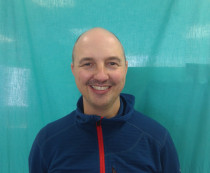Summary
This is the first of 2 blog posts about what we shared and learnt when Pia Andrews, Abbe Marks and I visited Innovation Labs in Auckland and visited Tauranga City Council to work with them on the development of the Rates Rebate Alpha. We aimed to build connections with people and Labs in Auckland and Tauranga for collaboration on Service Innovation Lab work programme initiatives.
In our 2-day race around Auckland we:
- learnt about exhibition design at Auckland Museum
- discussed how to collaborate more with Auckland Council
- talked about co-design with the Auckland Policy Office and the Auckland Co-Design Lab
- connected with other innovation teams and proposed a Lab Alliance.
My next post reports on what we did in Tauranga and my reflection on the whole trip.
Auckland Museum
Tim Hart, Director of Public Experience at Auckland Museum talked to us about their design and development of exhibitions and intention to explore becoming a public hub for social initiatives associated with their exhibitions.
Arama Mataira shared her experience of applying equitable cooperative co-design with Australian Indigenous communities when she was Principal of a Northern Territory remote school. Arama is an expert in a collaborative systemic change framework called the “Walk Together Design”. This was one of the most complete co-design frameworks I’ve come across and is ideal for wicked problems and opportunities like the ones we face in the public sector. This active approach to getting people from different groups to find middle ground and co-developing an equitable platform for co-design is an important consideration for everyone doing co-design, consultation or service design in government.
Auckland Council
We spent some time talking with people at Auckland Council about their work, our work and where we might find areas to collaborate further. Our relationship with their Service Design team continues to foster learning and sharing. Their thought leadership on exploring city futures and using that modelling to inform current programmes of work is a great approach for strategic planning and prospective design towards a better future.
The Auckland Policy Office
Pia and Abbe gave a shared presentation to the Auckland Policy Office. Pia covered major shifts in society and the need for government systems to adapt accordingly, including the future roles of government. This was based on her keynote speech at the FWD50 conference in Canada (November 2017).
We discussed our Lab’s “Better Rules” collaboration with other agencies about legislation-as-code and taking a more multi-disciplinary approach to policy, legislation and implementation to improve government outcomes. The cross agency group of policy experts were extremely interested in how to apply service design to policy and noted the work of the Social Innovation Lab in Taiwan as a great example.
Kim Connolly-Stone from the Ministry of Business, Innovation and Employment (MBIE) team shared an example of their recent co-design work focussing on helping New Zealand Small to Medium Enterprises make better use of digital technologies. Kim reflected that co-design is difficult but rewarding when you get it right and that having a coach to navigate the process is extremely useful. This further validated my previous experiences working within teams new to service design, agile and other innovation methods. The trick is providing the right amount of guidance - too much risks narrowing exploration and reduces opportunities to find innovative solutions, and too little risks the team drifting from their mission.
Auckland Co-Design Lab
The Auckland Co-Design Lab, hosted by Auckland Council, was established to provide a space to explore complex social issues by developing new insights and ideas using co-design and other innovative approaches.
Gael Surgenor and Alastair Child introduced us to Penny Hagan and the rest of the co-design team. This lab is one of the finest examples of a team applying co-design in New Zealand. Their work with both central and local government agencies on healthy homes, employment and skills, an online community empowerment platform called UpSouth, and early childhood education are inspiring.
We were particularly impressed with their whānau-centred design methodology, which looks at the full context of people rather than just individual needs. We heard amazing stories of empowerment in the communities they work with.
Lab Alliance
We met with Luke Krieg and the team at the NZTA Innovation Lab and were joined by leaders of Labs from Auckland Transport, Datacom and WaterCare. It was a chance to introduce our Lab, hear stories about their teams, the challenges we all face and the things we have in common.
One of the big things in common is that all the labs are very new and are finding their feet. They have been set up by strong leadership who recognise that we can’t just keep on driving the systems and processes to do more when something different might be needed instead. It also further confirmed that we need a Lab Alliance to openly share our work programmes with each other and seek synergies, including connecting our teams by sharing workspaces.
See the next post where I report on what we did in Tauranga and my reflection on the whole trip.
If you'd like to stay across our work, please join our mailing list.


